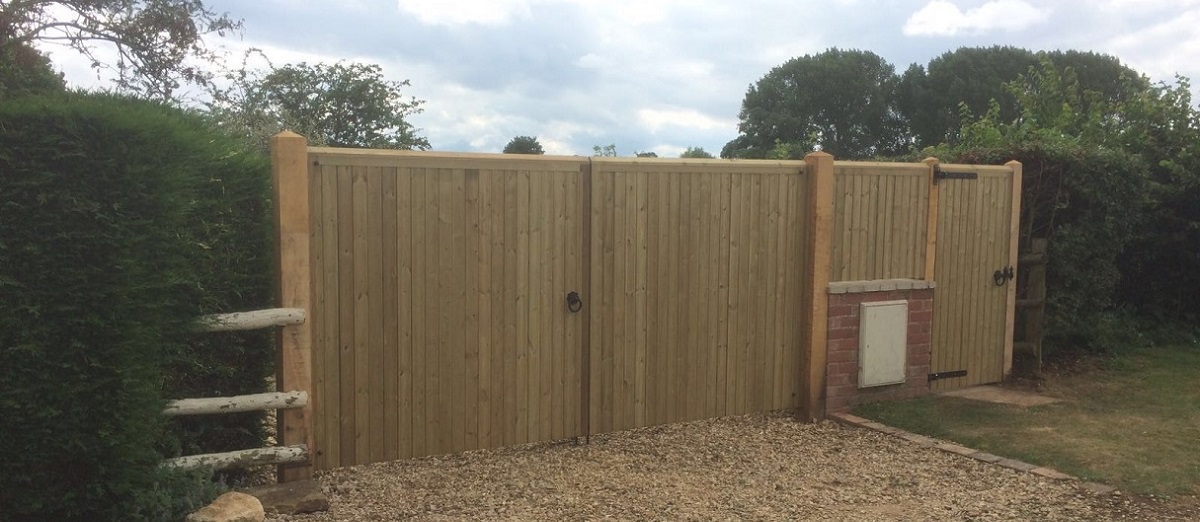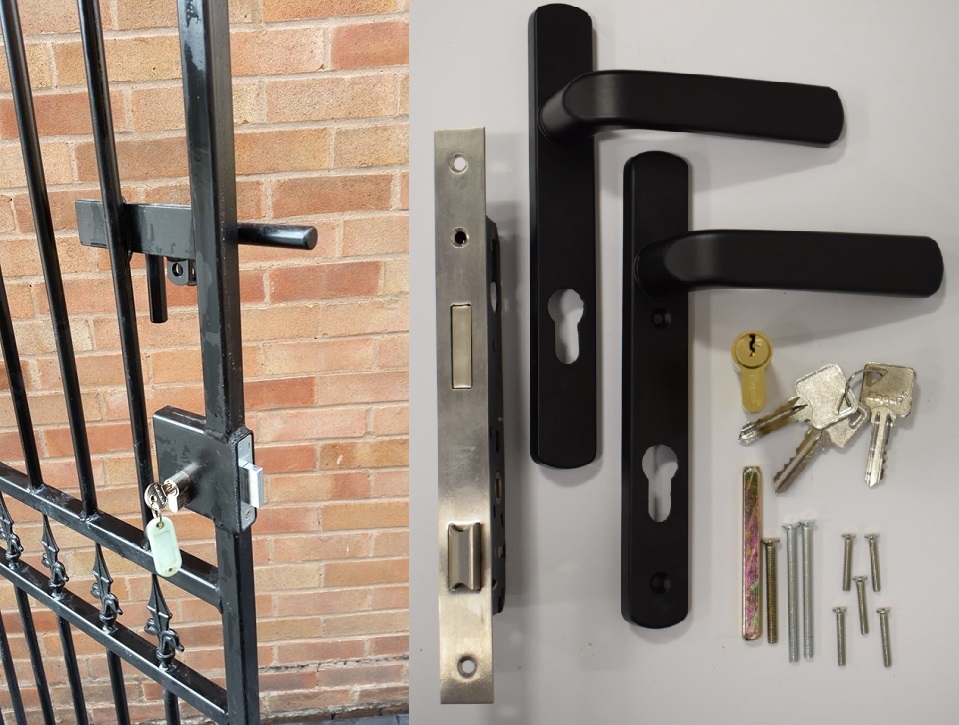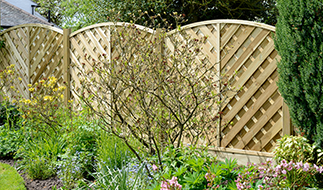- Gates
- Railings
- Fencing
- Accessories
& Fitting- Sheds
& Storage- Garden Structures
- Design
& StyleMetal Gates & Railings- Info
& Help2023-04-14
An entrance gate can provide aesthetic appeal and security for a property. It is, therefore, essential to carefully consider the function and design to ensure that it meets the property owner's needs. Here we take a comprehensive look at the primary roles it must serve.
There are several reasons why having a gate is important:
-
Security: One of the primary reasons for having a gate is to increase the security of your property. It should be a physical barrier to prevent unauthorised access and deter potential intruders.
-
Privacy: It should provide privacy by preventing people from being able to see your property. This can be especially important if you have a home or business in a busy area.
-
Aesthetics: It can enhance the curb appeal of your property and add to its overall aesthetic appeal. There are many different styles and materials to choose from, so you can find a gate that complements the look of your property.
-
Access Control: It can control who has access to your property. This can be especially important for businesses with restricted areas or homeowners who want to control who can come onto their property.
-
Safety: A gate can also provide safety benefits by preventing children or pets from wandering onto the street or into unsafe areas. It can also prevent strangers from entering your property and potentially causing harm.

Everything You Need to Know
We have provided a detailed guide below if you want more comprehensive information on the important points you should consider when purchasing, installing or maintaining a gate.
What Material Should the Gate Be Constructed From?
The type of material will depend on various factors, including the style of the property, the purpose of the gate, and the level of security and privacy required. Here are some common materials and the properties they may suit:
-
Wrought Iron: This type is classic and elegant and can suit various property styles, from traditional to modern. They can provide security and privacy while also adding aesthetic appeal.
-
Wooden: Timber styles can add a rustic and natural look to a property and suit a range of styles, from traditional to contemporary. They may be a good option for properties with many natural surroundings, such as a forest or garden.
-
Steel: These are durable and provide excellent security, making them a good option for properties that require a higher level of protection. They can be in various styles, from contemporary to ornate.

Ultimately, the style you choose will depend on your personal preferences and the specific requirements of your property.
What are the Different Parts of a Gate?
Here is some common terminology that you may encounter:
-
Post: This is the vertical support structure on either side of the gate that provides support.
-
Framework: This is the gate structure, including the horizontal and vertical members that make up the shape.
-
Leaf: The part of the gate that swings open and closed.
-
Hinge: The hardware that allows it to swing open and closed.
-
Latch: The mechanism that secures the gate in the closed position.
-
Lock: A mechanism that prevents unauthorised access.
-
Gate Stop: A device that prevents it from swinging past a certain point.
-
Automation: The process of adding an electric motor to allow it to open and close automatically.
-
Opener: The device powers the automation and allows the gate to open and close.
-
Sensor: A device that detects the presence of a vehicle or pedestrian and signals the opening movement.
-
Intercom: A communication system that allows people to communicate with visitors at the entrance without physically opening the gate.
These are just a few of the most common terminology, but many more terms and components depend on the type and design of the gate.
How Do You Keep the Gate Safe?
Safety is paramount to prevent injuries or accidents. Here are some tips to help ensure gate safety:
-
Choose the Right One: Make sure it suits the purpose and location where you plan to install it. Consider factors like size, weight, and material.
-
Check Regularly: Inspect it regularly to ensure it's in good condition and working correctly. Check the hinges, locks, and latches for wear and tear, and repair or replace them if necessary.
-
Install Properly: Ensure it is installed correctly and securely, with no gaps or spaces that could trap fingers or limbs. It should be level and plumb, with no sagging or dragging.
-
Install Safety Devices: Install safety devices like self-closing hinges, safety latches, and warning signs to help prevent accidents.
-
Teach Children about Safety: Warn them of the dangers of playing with or climbing on gates.
-
Supervise Children: Always supervise children around gates and ensure they don't play on or around them.
-
Keep the Area Clear: Keep the area around the gate clear of any obstacles or debris that could cause trips or falls.
Gate safety is everyone's responsibility; these precautions can help prevent accidents and injuries. If you notice any problems, address them immediately to ensure continued protection.
What are the Different Types of Hinges?
The hinges are the hardware that attaches the gate leaf to the post, allowing it to swing open and closed. There are several types of hinges, each with its advantages and disadvantages. Here are some common types of hinges:
-
Butt Hinge: A hinge mounted directly onto the gate and post. Butt hinges are simple and affordable but may not be as strong as others.
-
Strap: A hinge mounted onto the gate and post using a long metal strap. Strap hinges are solid and durable but may be more challenging to install than other hinges.
-
Barrel: A hinge that uses a barrel-shaped pin to attach the gate leaf to the post. Barrel hinges are strong and long-lasting but may require more maintenance than other types of hinges.
-
Weld-on: A hinge welded directly onto the gate and post. Weld-on hinges are solid and secure but may be difficult to install and adjust.

When choosing hinges, it's essential to consider the weight and size of the gate, as well as the material and location. Additionally, ensure the hinges are correctly installed to guarantee the gate operates safely and smoothly.
What is the Gate Framework?
The framework's structure includes the horizontal and vertical members that make up the gate. The framework is typically metal or wood, although other materials can also be used. Here are some common types of gate frameworks:
-
Metal: A metal gate is typically made from steel or aluminium and is known for its strength and durability. Metal frames can be welded or bolted together, supporting heavy gate leaves.
-
Wood: A wood gate frame is typically made from pressure-treated lumber or hardwood and is known for its natural beauty and versatility. Wood frames are assembled using traditional joinery techniques or with metal hardware.
-
Vinyl/PVC: A vinyl or PVC frame is lightweight, weather-resistant, and requires little maintenance. Vinyl/PVC frames are typically made from hollow extrusions that can be assembled using snap-together connectors.
-
Composite: A composite gate is made from a combination of materials, typically wood fibres and plastic, and is known for its durability and resistance to rot and insects. Composite frames can be assembled using traditional techniques or with metal hardware.
When choosing a gate framework, it's essential to consider the weight, size, material, and location.
What are the Different Types of Gate Posts?
The posts are a critical component of a gate system and play a crucial role in supporting the weight of the gate and ensuring its stability. Here are some common types of posts:
-
Wood: Wood posts are popular for their natural beauty and affordability. They can be made from various wood species, including cedar, redwood, and pressure-treated lumber. They are typically set in concrete for added stability.
-
Metal: Metal gate posts are typically made from steel or aluminium and are known for their strength and durability. They can be powder-coated or painted to match the gate and are installed using anchor bolts or set in concrete footings.
-
Masonry: Masonry gate posts are made from bricks, blocks, or stones and can be customised to match the surrounding area's architecture. Masonry posts are typically set in concrete footings for added stability.

When choosing posts, it's essential to consider the weight and size of the gate, as well as the material and location.
What are the Main Designs?
The design can vary widely based on personal preference, intended function, and the surrounding architecture. Here are some standard gate designs:
-
Single-Swing: This is a simple design that swings open on one side. It can be made from various materials and customised with decorative elements.
-
Double-Swing: This design comprises two gate leaves that swing open from the centre. These are typically used for wide driveways or entrances and can be made from various materials.
-
Sliding: This space-saving design slides horizontally along a track. They are commonly used in areas with limited space.
-
Pedestrian: These are used for smaller entrances designed for foot traffic. Pedestrian gates can be designed to match the Style of the main gate.
-
Automated: These are operated using a remote control or keypad. Automatic options are typically more expensive than manual gates but offer added convenience and security.
When designing a gate, it's essential to consider the intended function, the surrounding architecture, and any safety or security concerns.
How Do You Install a Gate?
Installing a gate can be a relatively simple DIY project. Still, it's essential to do it properly to ensure safety and functionality. Here are some general installation tips:
-
Before you purchase, measure the opening where you plan to install it. It's essential to get accurate measurements to ensure a proper fit.
-
Clear the area where you plan to install the gate, ensuring no obstructions could interfere with the gate's operation. You may need to level the ground or install a concrete pad for it to sit on.
-
The gate posts are the foundation for your installation, so it's important to install them correctly. Dig a hole for each post, and ensure they are level and secure before installing the gate.
-
Once the posts are in place, you can hang the gate. Ensure it's level and plumb and swings freely without dragging or sticking.
-
Finally, install the hardware, including hinges, latches, and locks, ensuring it closes and locks correctly.
Gate installation can be dangerous, so take all necessary safety precautions. If you need more confidence in your DIY skills, consider hiring a professional to do the installation for you.
How Do You Maintain a Gate?
Proper maintenance ensures your gate's longevity, safety, and functionality. Here are some tips for gate maintenance:
-
Cleaning: Regular cleaning can help prevent dirt, debris, and grime build up. Use a mild detergent and water to clean the surfaces, and rinse thoroughly with a hose.
-
Lubrication: Proper lubrication of hinges and other moving parts can help prevent rust and ensure smooth operation. Use a silicone-based lubricant to lubricate the hinges, rollers, and other moving parts.
-
Inspection: Regularly inspect for signs of wear and tear, including rust, cracks, and loose bolts or screws. Address any issues immediately to prevent further damage.
-
Painting or Staining: If it is made from wood, regularly painting or staining it can help protect it from the elements and keep it looking new.
-
Weatherstripping: If your gate is exposed to extreme weather conditions, consider installing weatherstripping to prevent moisture from seeping in.
-
Professional Maintenance: Consider hiring a professional to perform regular maintenance, especially if it is an automated gate. A professional can inspect and adjust the components, ensuring safe and reliable operation.
Following these maintenance tips ensures that your gate remains safe, functional, and visually appealing for years.
What is the Best Way to Add Security to Your Pedestrian or Driveway Entrances?
Security to pedestrian and driveway entrances is essential for any property owner. The addition of a gate can provide an added layer of protection against unauthorised entry. Here are some tips for enhancing security:
-
Choose the Right Design: Choose a sturdy style made from durable materials like steel or aluminium. It should be high enough to deter intruders from climbing over it.
-
Install a Lock: Installing a high-quality lock can prevent unauthorised access. A combination lock or keypad can provide added security.
-
Use Security Cameras: Install security cameras near your gate to monitor activity and deter intruders.
-
Install Lighting: Install lighting near your entrance to deter intruders and improve visibility at night.
-
Add an Intercom: An intercom system can allow you to communicate with visitors before allowing them entry.
-
Install an Alarm: An alarm system can provide an added layer of security by alerting you and authorities of any unauthorised entry.
By implementing these security measures, you can help ensure the safety and security of your property and deter unauthorised entry.
What are the Benefits of Zinc Plating a Gate?
Zinc plating protects metal surfaces, including gates, from corrosion and rust. Here are some benefits of zinc plating a gate:
-
Corrosion Resistance: It creates a protective barrier between the metal surface and the environment, preventing rust and corrosion.
-
Increased Durability: It can improve the durability of a gate by protecting it from wear and tear, environmental factors, and harsh weather conditions.
-
Aesthetics: It can improve the appearance by providing a smooth, shiny surface resistant to tarnishing.
-
Cost-effective: Zinc plating is a cost-effective method of protecting metal surfaces from corrosion and rust, which can save money in the long run by reducing the need for frequent repairs or replacements.
-
Environmental Benefits: Zinc plating is a relatively environmentally friendly process that does not generate toxic by-products or waste.
Overall, zinc plating can provide numerous benefits for gates and other metal surfaces, helping to protect them from corrosion, increase their durability, and improve their appearance, all while being cost-effective and environmentally friendly.
What Should You Consider if You Have Pets?
A gate can play a crucial role in keeping pets safe and contained within a property. Here are some considerations to keep in mind when it comes to pets:
-
Height: When selecting a gate, consider the size and breed of your pet. A gate should be high enough to prevent your pet from jumping over it or escaping underneath it.
-
Material: The material should be durable and withstand any potential pet scratching or chewing. Metal may be better than a wooden gate, which can be easily scratched and chewed.
-
Gate Latch: Ensure the latch is secure and out of reach of pets. A curious pet can easily open a latch that is too low, while a latch that is too high can be difficult for some pet owners to reach.
-
Training: Proper training can help your pet understand the property's boundaries and prevent them from attempting to escape.
-
Consider Additional Security Measures: If your pet is an escape artist or prone to digging, consider adding a barrier below the gate or installing an extra layer of fencing around the perimeter of your property.

A gate is an effective way to keep pets safe and contained within a property. It is, therefore, essential to choose the right gate and take additional security measures as needed to prevent escape. Proper training and reinforcement can also help pets understand the boundaries and stay within the bounds of your property.
In conclusion, finding a gate that provides the right combination of aesthetic appeal, security, safety, durability, and functionality choosing the right gate can be a complex process. Therefore, we recommend you carefully consider the property's needs before making rash purchasing decisions.
- Railings
sales@gardengatesdirect.co.uk



